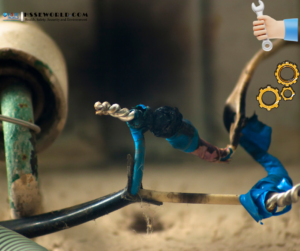Every year approximately 100 people are killed during construction work (2 a week). The cost of accidents can be measured in both financial and human terms. The second of these may easily be the greater loss and have the longest and farthest reaching effect. A few minutes spent learning how to avoid accidents represents time well spent. These Tool Box Talks address the most basic points concerning topics, activities and locations. They are designed to be fleshed out into short talks of 10 to 15 minutes duration without requiring specialist knowledge on the part of the speaker. The talks should be concise and punchy, to get the message across. A pattern of weekly talks is suggested. Every employer has a legal obligation to inform, instruct and train operatives about the risks they face in their work. Safety Awareness Talks can play a part in this and will promote the discussion of safety procedures. They should be repeated at intervals. A record must be kept of who has received this training. On the back of each Talk Sheet, there is an attendance form, which should be completed and returned to the person in charge of safety in your company. Proof of training may be required at a later date.
You may have missed
- Login
- Sign Up
To provide the best experiences, we use technologies like cookies to store and/or access device information. Consenting to these technologies will allow us to process data such as browsing behavior or unique IDs on this site. Not consenting or withdrawing consent, may adversely affect certain features and functions.
Functional Always active
The technical storage or access is strictly necessary for the legitimate purpose of enabling the use of a specific service explicitly requested by the subscriber or user, or for the sole purpose of carrying out the transmission of a communication over an electronic communications network.
Preferences
The technical storage or access is necessary for the legitimate purpose of storing preferences that are not requested by the subscriber or user.
Statistics
The technical storage or access that is used exclusively for statistical purposes.
The technical storage or access that is used exclusively for anonymous statistical purposes. Without a subpoena, voluntary compliance on the part of your Internet Service Provider, or additional records from a third party, information stored or retrieved for this purpose alone cannot usually be used to identify you.
Marketing
The technical storage or access is required to create user profiles to send advertising, or to track the user on a website or across several websites for similar marketing purposes.
To provide the best experiences, we use technologies like cookies to store and/or access device information. Consenting to these technologies will allow us to process data such as browsing behavior or unique IDs on this site. Not consenting or withdrawing consent, may adversely affect certain features and functions.
Functional Always active
The technical storage or access is strictly necessary for the legitimate purpose of enabling the use of a specific service explicitly requested by the subscriber or user, or for the sole purpose of carrying out the transmission of a communication over an electronic communications network.
Preferences
The technical storage or access is necessary for the legitimate purpose of storing preferences that are not requested by the subscriber or user.
Statistics
The technical storage or access that is used exclusively for statistical purposes.
The technical storage or access that is used exclusively for anonymous statistical purposes. Without a subpoena, voluntary compliance on the part of your Internet Service Provider, or additional records from a third party, information stored or retrieved for this purpose alone cannot usually be used to identify you.
Marketing
The technical storage or access is required to create user profiles to send advertising, or to track the user on a website or across several websites for similar marketing purposes.





